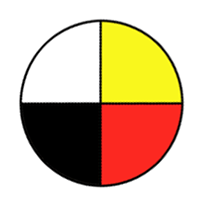Explore how humans and animals use their senses to interact with their environment.
CP, DM, SI
| (a) |
Pose questions that lead to exploration and investigation of human and animal senses. |
| (b) |
Record observations about specific objects (e.g., apple, pencil, shirt, and tree) in their environment using all of their senses as appropriate. |
| (c) |
Record observations of various environments (e.g., classroom, gymnasium, school yard, library, and cafeteria) using all of their senses as appropriate. |
| (d) |
Imagine, and compare with others, possible sensations that students would likely experience in other environments based on representations (e.g., stories, pictures, and videos) of those environments. |
| (e) |
Explain and follow given safety procedures and rules when using the senses to observe (e.g., explain the danger to health of tasting unknown materials and the reasons for wafting odours towards the nose rather than smelling directly). |
| (f) |
Assess the function of aids (e.g., glasses, hearing aids, raised Braille alphabet, sign language, and guide dogs) that support peoples' differing abilities to sense their environment. |
| (g) |
Experience changes in ability to explore the environment after the simulated loss of one or more senses (e.g., blindfold, earplugs, nose clip, and socks over both hands). |
| (h) |
Suggest how a human or animal might function if they were totally or partially missing one or more of the five senses. |
| (i) |
Explain how each of the senses helps us to recognize, describe, and safely use materials, and recognize potential dangers in the environment (e.g., colour and smell help determine whether fruit is healthy or bruised, ripe or overripe; machine noises may indicate it needs repair or is not being used correctly; and sirens and flashing lights may indicate an emergency vehicle). |
| (j) |
Discuss dangers associated with using the senses to examine the environment (e.g., eating some foods may cause allergic reactions, breathing in certain odours may cause illness, sharp edges can cut skin, extremely loud sounds can damage hearing, and looking at the sun can cause eye problems). |
| (k) |
Describe different sense organs and/or adaptations that enable various animals to accomplish their daily tasks (e.g., bats use echolocation to find prey, cat's pupils dilate to see in low light, bees can sense ultraviolet light, scorpions can have up to 12 eyes, elephants can hear extremely low sounds, and hawks have excellent vision). |
| (l) |
Provide examples of how the senses are important to people in their hobbies and jobs. |













Included in the resource is a variety of formats to support resource-based learning. Instructional strategies are explained and differentiating instruction is included to assist teachers with the diversity within the classrooms. The "release of responsibility" model has students demonstrating and applying their knowledge in a variety of ways. A comprehensive approach is used to teach the cues and conventions and they are incorporated into the framework of the lesson plans. There are cross-curricular units that link to science and social studies.
The teacher's guide is detailed and comprehensive with formative and summative assessment tools. Teacher reflection is emphasized.



